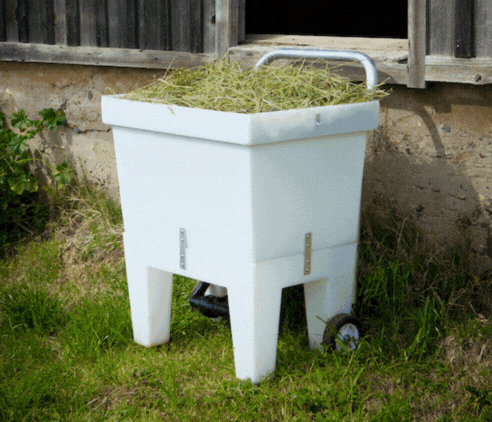Posted by Joyce Harman, DVM on Jul 21st 2022
Hay Equals Warmth – Winterize Your Horse

If you observe what your horse eats in the winter, it’s usually more hay. Allow them to have more hay if the weather is really cold. Why is this important and an effective approach to winterizing your horse? Because food can do a lot to warm your horse.
Interestingly enough it’s not with feeding more grain. It is with forage. Horses run on forage. The majority of caloric intake for most horses is forage, ranging from 1.5 percent to 3 percent of body weight. Concentrates or grains are needed only to make up the difference in calories between the forage and what the horse needs to maintain weight. Horses may need to take in more calories based on their metabolic rate. Some horses such as thoroughbreds have a higher metabolic rate. Performance horses go for long rides or hard training, and cold weather in general burns more calories.
For some individuals you may need more grain. But hay equals warmth. A horse’s cecum, which is positioned near the small and large intestines, serves as a way to store water and electrolytes. This is important for fiber consumption and replacing electrolytes after heavy sweating. In the cecum, the long stem fiber is broken down into nutritional components. That breaking down process generates heat as a byproduct which is really important in cold weather.
Always add more hay first before concentrates because it’s far more effective. If your horse doesn’t have weight issues, then freely feed the hay. If there are weight problems, you can control their hay intake with slow feeders or certain muzzles, of which there are many varieties on the market. But in freezing temperatures, allow the hay because they will burn the calories.
If you have hay with high sugar content, you can soak and rinse it to eliminate some sugar. The research is variable on how much sugar it removes, but it’s a way to salvage your hay. Soaking hay can be difficult because it freezes in the winter and ferments in the summer. So, plan for these issues if you soak your hay or look for a new product called the Hay Soaker (https://murdochmethod.com/product/the-hay-soaker/), which will make the job easier.

Pasture Grazing in Winter
Fescue or cool season grass grows in the spring and fall in Mid-Atlantic and parts of the Midwestern states. Stockpiled tall fescue is the best forage to use for extending the grazing season into late fall and early winter. Fescue is bitter in the summer and sweet after a frost, which can increase sugar levels by 30 percent.
But if you have a killing frost and your other grasses die, fescue becomes your spring grass. It becomes sweet to the horses and their grazing patterns will change. They will eat that portion of the field which they had been avoiding. For horses with weight issues, this can cause laminitis problems in January, the same as in May. If the weather isn’t as cold or there are warmer spells, there are many types of grasses that may have increased sugar content. Muzzles can control intake and allow the nutrients from the grasses. Muzzles do not allow horses to overdo it with hay and allow the horses to exercise and graze with their friends.
Most horses, about 70 percent, are too heavy. About 10 to 20 percent have too little weight. Horses without weight problems can be allowed to graze on fescue. Try to feed hay as much as possible before pouring on grain and concentrates. Feeding too much grain or high carbohydrates diets have a tendency of passing through the stomach quickly and end up in the hind gut which may cause ulcer issues.
To add calories, especially for older horses with teeth problems, add oils and fats. These are safe calories for insulin resistant horses. Hemp seeds and hemp oil are nutrient rich while flax and chia seeds are also healthy fats but may not add enough calories for a thin horse. Coconut oil is an excellent source but it does freeze hard if you’re in a cold climate. You can add up to a cup a day to a horse’s diet with no problem.
Enjoy Your Horse in Wintertime
It is important to establish a winterization plan to keep your horse healthy and avoid injuries throughout the cold months. Use food, particularly hay, as an excellent resource for warmth. Choose hay first before concentrates or other options because it’s far more effective in the winter. Adapt to your horse’s individual needs – not just the temperature outside or your perceptions about the horse based on your own needs. Let horses be horses in the winter and enjoy the colder months with them!
Portions of this article are from a live webinar featuring Dr. Joyce Harman, DVM.
Watch the full presentation at https://youtu.be/sryv0Tz1trc.
This webinar was proudly sponsored by Doc’s Hemp, your #1 source of CBD for horses, dogs and cats.

